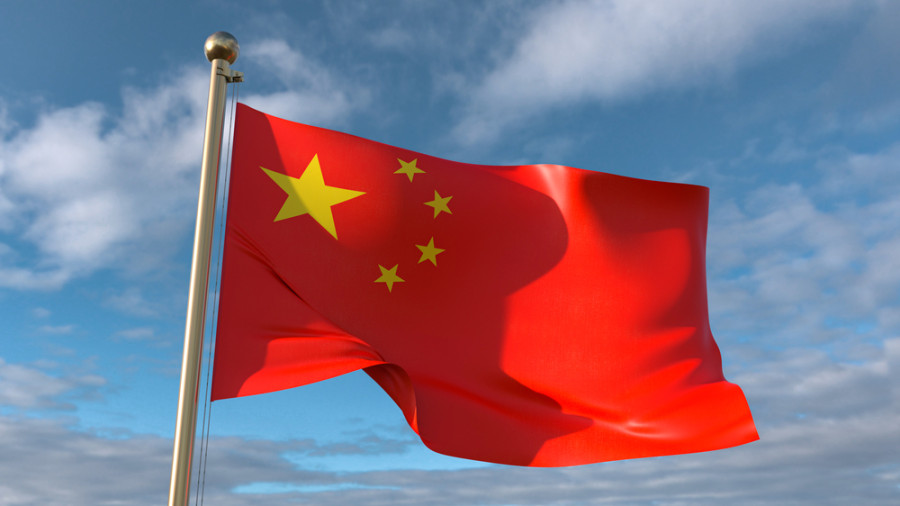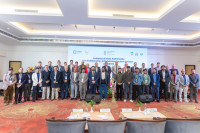National
China aims to create an alternative regional bloc in South Asia
Observers say Nepal needs to tread carefully as the Beijing-led poverty alleviation centre minus India is part of Chinese attempts to expand its influence and countervail New Delhi’s clout in the region.
Anil Giri
China’s attempts to make inroads into South Asia continue.
The latest one is the establishment of the China-South Asian Countries Poverty Alleviation and Cooperative Development Center in Chongqing City on Thursday.
Of the eight members of the South Asian Association for Regional Cooperation (SAARC), which is almost in a coma, five have joined the Beijing-led initiative.
India, Bhutan and the Maldives are conspicuous by their absence.
Diplomats and security experts say that the initiative launched by Beijing, which is a minus India alliance created when the SAARC process is stalled, is to counter India and aims to build China’s inroads into the region and that it carries a significant underlying geostrategic meaning.
“If poverty alleviation in South Asia is its major objective then why is India left out? After all, it has the highest number of poor people equal to those in the Sub-Saharan region,” Dinesh Bhattarai, former foreign relations advisor to two prime ministers and ambassador to Geneva, told the Post. “I see some kind of geostrategic significance and meaning behind the formation of this center.”
Bhutan does not have diplomatic relations with China.
The Chinese push comes also at a time when India has been reluctant to revive SAARC, turning its focus more on yet another regional bloc–BIMSTEC.
The Bay of Bengal Initiative for Multi-Sectoral Technical and Economic Cooperation (BIMSTEC) has seven countries as members that lie in the littoral and adjacent areas of the Bay of Bengal.
“It is clearly evident that this is a minus-India initiative led by China and those South Asian nations which are part of China-led Belt and Road Initiative are its partners,” said Sundar Nath Bhattarai, officiating chairman of China Study Centre, Nepal and a former ambassador. “Sooner or later, the Maldives will also join this initiative because it too has signed up to the BRI.”
The idea behind setting up the centre was first shared during a virtual meeting between foreign ministers of the five South Asian nations and Chinese Foreign Minister Wang Yi at the end of April to discuss the Covid-19 pandemic.
“The establishment of China-South Asian Countries Poverty Alleviation and Cooperative Development Center is an important initiative proposed by State Councilor and Foreign Minister Wang Yi on behalf of the Chinese government at the Conference of Foreign Ministers of China, Afghanistan, Bangladesh, Nepal, Pakistan and Sri Lanka on Covid-19 this April, which was well received by the South Asian countries,” the Chinese Foregn Ministry said in a statement. “The Center aims to pool strength, integrate resources, and exchange wisdom to support and help the South Asian countries' economic development and livelihood improvement, jointly promoting the cause of poverty reduction.”
During the virtual meeting in April, India was invited but it did not participate.
China has not announced how the center will function, what its budget will be, how it will work with the South Asian countries and in what areas. Some inter-ministerial consultations have begun among the line ministries on how to utilize the forum.
“This is basically a platform where participating countries will learn from China’s experience in eradicating poverty and will share their experiences too,” said a joint secretary who is familiar with the objective of the new center. “As per its objective, the partnership will be inclusive, result-oriented, sustainable and demand driven.”
Officials said that Nepal has already begun discussions on how to best utilise the forum for the country’s benefit and has asked the National Planning Commission and Ministry of Land Management, Cooperatives and Poverty Alleviation on how to participate in the new initiative taken by China.
“As soon as China started sharing the concept of the center and its objective, the Ministry of Foreign Affairs had asked different stakeholders about Nepal’s possible participation and contribution,” said a joint secretary of the ministry familiar with the matter. “Some modalities will be discussed. We will share our experiences and offer some pilot projects when the center comes into full operation.”
Among the modalities could be technology transfer, using China’s market or joining the supply-chain ring, according to him.
The Chinese Foreign Ministry also has not shared much about this new concept. But according to the ministry, during the opening session, all five ambassadors of the South Asian nations supported the idea and concept initiated by China.
As per the agreement between China and five South Asian nations, apart from this center, China is going to set up China-South Asian Countries Emergency Supplies Reserve in Chengdu mostly targeting natural disasters and prompt supply of emergency goods. Another platform that China is working with South Asian nations is to set up a China-South Asian Countries E-commerce Cooperation Forum on Poverty Alleviation in Rural Areas, according to Nepali officials.
“China is targeting South Asia and wants to counter SAARC so it is now connecting with South Asian nations in the name of different initiatives,” Nihar Nayak, a research fellow at New Delhi-based Manohar Parrikar Institute for Defence Studies and Analyses, told the Post over the phone.
According to former adviser Bhattarai, since SAARC has been sidelined and is almost dead, the new initiative of China has significant value and the way India-China relations are moving ahead, more pressing times are coming for Nepal and Nepal’s troubles will multiply henceforth.
Bhattarai termed Indian Prime Minister Narendra Modi’s recent phone call to Tibetan exiled leader, the Dalai Lama, to greet him on his 86th birthday, as “significant departure” from India's China policy.
The China-led bloc could be Beijing’s plan to create what some call a northern Himalayan Quad aimed at countering the Washington-led Quad of which India is an active member, said Bhattarai.
The Quad, short for Quadrilateral Security Dialogue, is a strategic dialogue between the United States, Japan, Australia and India.
According to Nayak, China has different kinds of strategic, maritime, political and ideological interests with different South Asian nations so it is increasing its engagements with each country on equal footing to counterbalance India.
“They can't ignore the Maldives because China has maritime interests with it and it is part of China’s BRI too,” said Nayak. “Pakistan is its all-weather friend so next the target is Afghanistan then Bangladesh and later it will be Nepal.”
These efforts come as SAARC tumbles. Founded in 1985, SAARC is coping with several problems within the region and is mostly distracted by the long-standing rivalry between India and Pakistan. After Nepal hosted its 18th Summit in 2014, the 19th summit, which was scheduled to be held in 2016 in Pakistan, is still in limbo.
The 2016 summit was called off after India said it would not participate.
“They [the Chinese] are trying to create parallel structures to SAARC, fully following the SAARC model in developing these avenues,” said Nayak. “They are and will work in the region of those countries who are part of the BRI.”
Despite the pandemic China’s economic growth has continued, and its economic muscle helps it achieve a significant clout, observers say.
“Economically, China is a driving force so it is now diversifying its interests and distributing its dividend to the rest of the world. Look at its level of engagement with several Asian countries and now in South Asia,” said Bhattarai of the China Study Centre. “We too have to take advantage of these opportunities.”
But given the continuing friction between India and China, others suggest that Nepal might face huge challenges to balance relations in the days to come.
“This seems to be China 's strategy to contain and undermine India's role in South Asia,” said Bhattarai, the former advisor to two prime ministers. “We will definitely suffer a lot if there are frictions between India and China. So we need a very delicate, balanced and nuanced approach to deal with these new emerging situations in the region.”




 7.12°C Kathmandu
7.12°C Kathmandu















